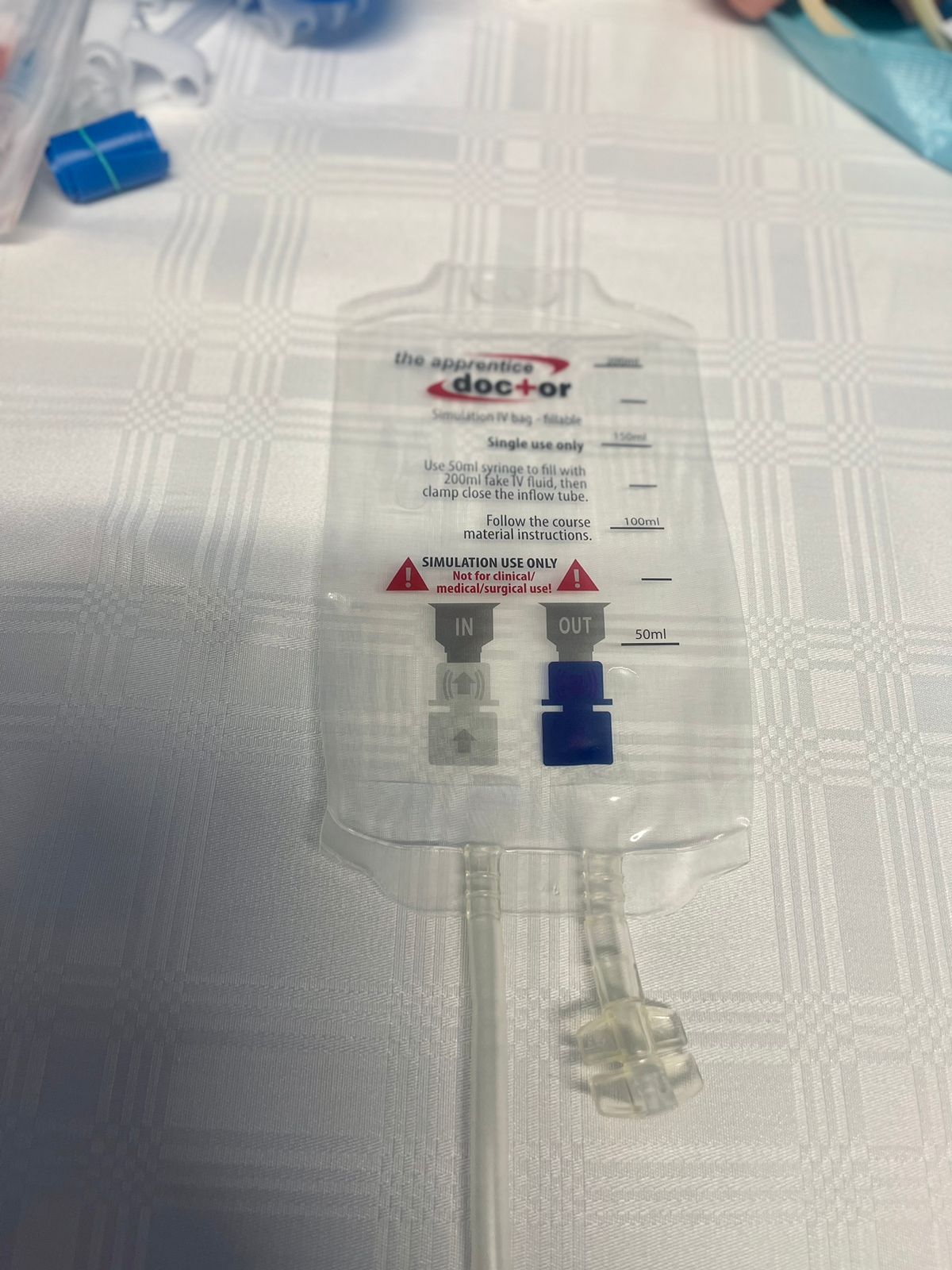!! IMPORTANT !!
If you cannot find your unique code, use this code to unlock your venipuncture course:
202307071
Instructions on how to setup your kit are found in the online course material.
Get in Touch, if you need assistance.
Thank you for investing in an Apprentice Doctor® Simulation Practice Kit.
Every kit is paired with an Apprentice Doctor Academy course that guides you through the various medical techniques and skills.
With your purchase of this kit comes 6 months access to the associated course.
Step 1: Register at academy.theapprenticedoctor.com/register
Step 2: Check your email (including spam folder) and click on the link or paste the link into your browser to confirm your account.
Step 3: Log in
Step 4: Click on Access Course with Code or go to academy.theapprenticedoctor.com/register-your-kit-code/
Step 5: Enter your unique kit code.
Step 6: Scroll down and accept the terms and conditions, then click on Go to Course.
Best wishes with your course,
Enjoy it!
Dr. Anton Scheepers and the Apprentice Team

Guidelines for Using the Instruments and Items in Your Simulation Kit
Instructions to Fill IV Bag:

1. Take one IV bag. Read the instructions printed on the bag.
2. Use the 50 ml syringe and fill the bag with approximately 200 ml of fake IV fluid.
3. Close the “in” port.

4. Suspend the IV bag

5. Twist open the outflow port, connect the drip tubing, etc.

You already have your Venipuncture Simulation Kit! Would you like to become a certified phlebotomy technician?
The Apprentice Corporation is synergizing with Carrus Healthcare Training Platform. Their phlebotomy program prepares learners to become employed and practice in the United States in all 50 states (relevant visas required for non-US citizens) after they sit for the national certification offered by NHA, Certified Phlebotomy Technician:
www.careerstep.com/certify/healthcare/phlebotomy-technician/
Included in the program enrollment cost is a certification exam voucher and an externships where you will have the opportunity to complete clinical hours coordinated by Carrus to gain valuable hands-on experience.
Common Questions and answers:
I cannot get a flashback when I use the butterfly needles or the venous cannulas – do you have advice for me:
Certainly! When using the butterfly needle or the IV cannula, one should see a flashback of blood when successfully entering a vein/fake vein.
The flashback is not a function of the arm/mini-arm. It is not a lousy arm if you don’t get a flashback.
A successful flashback is a function of the following:
- The venous pressure in the fake vein
- The gauge diameter of the needle
- The viscosity of the fake blood
- Successful entry into the vein with the needle
Let’s discuss these topics one at a time:
The venous pressure in the artificial vein
One can get a better flashback by raising the pressure in the fake vein. Do this by elevating the fluid reservoir bag by about 6 inches (15 cm) at a time.
The gauge diameter of the needle
A smaller diameter needle, e.g., 22 G and higher – gives a slow/weak flashback. A broader diameter needle – 21 G or lower – offers a better flashback. On the downside, large-diameter needles damage the fake veins more and limit the service time of the arm.
It follows that by using a larger diameter needle, one would see a better flashback.
The viscosity of the fake blood
The higher the viscosity, the lower the chances of getting a good flashback. If you use fake blood – it might be a problem as many fake blood recipes include corn syrup, making the blood quite viscous. Real un-clotted blood is fairly non-viscous. We recommend using tap water and a few drops of red food colorant to be used as fake blood. Clean thoroughly after each session of use.
Open the inflow roller and clip clamps (if applicable)
If any of the inflow clamps are closed – the venous pressure will stay close to zero – and you will not get a flashback.
Successful entry into the vein with the needle
No matter how high the venous pressure and how large-bore needle you use – if you haven’t penetrated the vein successfully – then you will never get a flashback! Suggestion – keep on practicing! Also, if you did not enter the fake vein successfully – then your vacutainer will lose its vacuum, and it will be spoilt.
